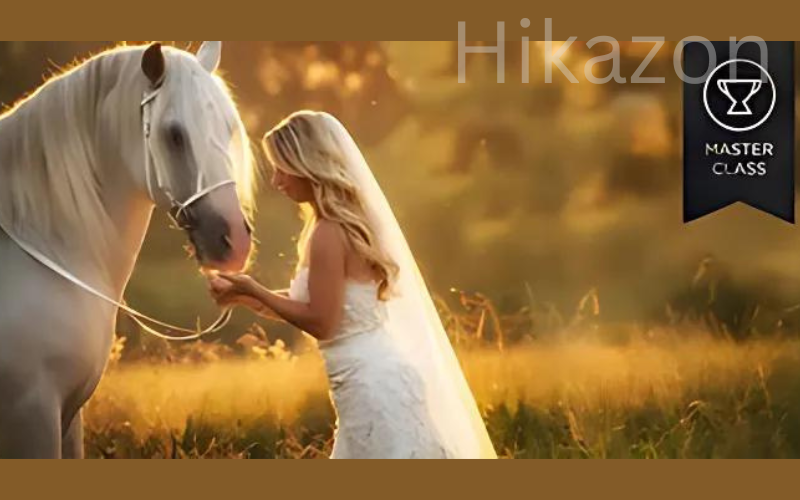Strategies for Shooting in Difficult Situations By Susan Stripling
$14.00 $5.00
Strategies for Shooting in Difficult Situations By Susan Stripling – Digital Download!
Content Proof:
Strategies for Shooting in Difficult Situations: A Review of Susan Stripling’s Course
Wedding photography is often likened to navigating a labyrinth intricate, unpredictable, and requiring a deft touch at every turn. In this ever-evolving art form, understanding how to adapt to difficult situations plays a significant role in the wedding photographer’s toolkit. In the online course “Strategies for Shooting in Difficult Situations” by Susan Stripling, photographers are equipped with practical insights and strategies that not only bolster their technical finesse but also enhance their creative problem-solving abilities. From low-light scenarios to inappropriate settings, this course provides a comprehensive framework for tackling the multifaceted challenges inherent in wedding photography.
The essence of Stripling’s teaching style lies in her ability to distill complex concepts into actionable strategies that are accessible to photographers of all skill levels. In her course, she draws upon her vast experience, sharing detailed examples that illuminate how to effectively manage various unexpected scenarios that can arise during events. Stripling’s warmth and passion for the craft resonate throughout the curriculum, leaving participants inspired to embrace challenges as opportunities for creativity and expression.
The Importance of Adapting Quickly
Adapting quickly to unforeseen circumstances is an essential skill for photographers. Whether it’s trying to achieve the perfect shot during a sudden downpour or positioning oneself amidst a crowd of guests, flexibility can make or break a moment. Stripling emphasizes that understanding the dynamics of a wedding day from timelines to lighting changes can empower photographers to be proactive rather than reactive.
Proactive Strategies
- Gear Up Smartly: Photographers should consider investing in versatile equipment that accommodates various lighting and spatial challenges. This includes:
- Fast lenses with wide apertures (f/1.8 or f/2.8) for low light
- External flash units or portable LED lights for difficult lighting conditions
- Lightweight tripod options to stabilize shots in unpredictable environments
- Scouting Locations: Prior to the event, visiting the venue can help identify problematic areas and visualize potential shots. Understanding the layout facilitates strategic planning and can alleviate stress during shooting.
- Mindfulness in Composition: Photographers are encouraged to focus on composition and backgrounds as they prepare to capture key moments. By remaining mindful of potential distractions, one can preemptively choose angles that minimize obstructions.
Handling Lighting Challenges
One of the predominant challenges in wedding photography is managing lighting effectively. Stripling dedicates substantial time in her course to elucidate how different lighting scenarios affect imagery.
Key Lighting Strategies
- Utilizing Natural Light: Embrace the available ambient light. Stripling suggests exploring locations around the venue that are well-lit naturally, such as open doorways or areas under trees for ideal soft light.
- Creative Flash Techniques: Mastering flash is crucial for overcoming low-light situations. Techniques like bouncing flash off walls or using diffusion filters can soften harsh shadows and create pleasing light.
- Continuous Lighting Setups: Experimenting with continuous light sources can help in static portraits, making subjects appear vibrant even under challenging conditions.
Comparing Lighting Approaches
| Lighting Type | Advantages | Limitations |
| Natural Light | Soft, flattering, and accessible | Unpredictable, changes throughout the day |
| Flash | Control over exposure, consistent | Can create harsh shadows if misused |
| Continuous Light | Visible and adjustable during setups | Can be bulky and less portable |
By considering the pros and cons of each lighting approach, photographers can better adapt their shooting styles to the circumstances they face.
Scene Setup Under Less-Than-Ideal Conditions
The art of capturing moments transcends the technical aspects of photography; it also relies on creating scenes that resonate with the essence of the day. Stripling’s insights help photographers set up scenes even in less-than-ideal conditions with a few fundamental strategies.
Effective Scene Setups
- Utilizing Environmental Elements: Photographers can use architectural features, natural landscapes, or even decorative items within the venue to frame subjects beautifully. Placing the couple against an interesting backdrop can add depth and character to their images.
- Incorporating Props and Textures: When the backdrop lacks appeal, drawing attention to textures, such as lace or floral designs in the couple’s attire, can create compelling focal points. This approach adds layers of interest to the photograph.
- Leveraging Reflections: Stripling encourages photographers to find and utilize reflective surfaces puddles, glass, and mirrors can create intriguing compositions that add dimension to simple scenes.
List of Scene Setup Tips
- Look for leading lines to draw the viewer’s eye towards the subject.
- Use negative space effectively to emphasize the couple.
- Consider the three-thirds rule for balanced compositions.
- Engage subjects in storytelling capture candid moments that reflect their personalities.
Capture Important Moments Despite Distractions
In the bustling atmosphere of a wedding, distractions can emerge from every direction, making it challenging to focus on capturing pivotal moments. However, Stripling arms photographers with strategies to mitigate these distractions effectively.
Maintaining Focus
- Anticipating Key Moments: By familiarizing oneself with the schedule of events, photographers can anticipate significant moments, such as the couple’s first kiss or the cutting of the cake, allowing them to be in the right place at the right time.
- Mindfulness in Action: Practicing mindfulness can aid photographers in remaining present and focused, thus enhancing their ability to recognize and capture fleeting moments, despite external chaos.
- Communication with Clients: Establishing clear lines of communication with the couple can help photographers understand which moments are most important to them. This insight can guide prioritization throughout the event.
Strategies For Managing Distractions
- Use strategic positioning to avoid crowded areas.
- Utilize long lenses to capture moments from a distance and maintain intimacy.
- Employ photo-editing techniques post-event to enhance distracting elements if they cannot be avoided.
Conclusion
In summary, Susan Stripling’s course “Strategies for Shooting in Difficult Situations” offers wedding photographers a wealth of knowledge that equips them with essential skills to navigate challenging environments confidently. By mastering the art of adaptation and embracing creativity, photographers can thrive amidst uncertainties, capturing beautiful and memorable moments that encapsulate the essence of each wedding day. This course stands as a testament to the transformative power of guidance in the realm of photography, providing both technical know-how and inspiration for photographers ready to seize any opportunity that presents itself within the frame.
Through Stripling’s teachings, attendees will emerge not only as better photographers but also as storytellers ready to transform obstacles into artistic opportunities.
Frequently Asked Questions:
Business Model Innovation: We use a group buying approach that enables users to split expenses and get discounted access to well-liked courses.
Despite worries regarding distribution strategies from content creators, this strategy helps people with low incomes.
Legal Aspects to Take into Account: Our operations’ legality entails several intricate considerations.
There are no explicit resale restrictions mentioned at the time of purchase, even though we do not have the course developers’ express consent to redistribute their content.
This uncertainty gives us the chance to offer reasonably priced instructional materials.
Quality Assurance: We guarantee that every course resource you buy is exactly the same as what the authors themselves are offering.
It’s crucial to realize, nevertheless, that we are not authorized suppliers. Therefore, the following are not included in our offerings:
– Live coaching sessions or calls with the course author.
– Entry to groups or portals that are only available to authors.
– Participation in closed forums.
– Straightforward email assistance from the writer or their group.
Our goal is to lower the barrier to education by providing these courses on our own, without the official channels’ premium services. We value your comprehension of our distinct methodology
Be the first to review “Strategies for Shooting in Difficult Situations By Susan Stripling” Cancel reply
You must be logged in to post a review.
Related products
Photography & Art
Photography & Art
Fashion Photography: Model Testing with Agencies by Elizabeth Wiseman
Photography & Art
Photography & Art
Digital Marketing for Your Photography Business by Jared Bauman
Photography & Art
Photography & Art
Apocalyptic Yorkshire Composite Stock Assets by Clinton Lofthouse
Photography & Art
FINE ART PORTRAITURE, STYLING and RETOUCHING by GEMMY WOUD-BINNENDIJK

 How to Day Trade Like the Top 10% By Maurice Kenny
How to Day Trade Like the Top 10% By Maurice Kenny 

















Reviews
There are no reviews yet.